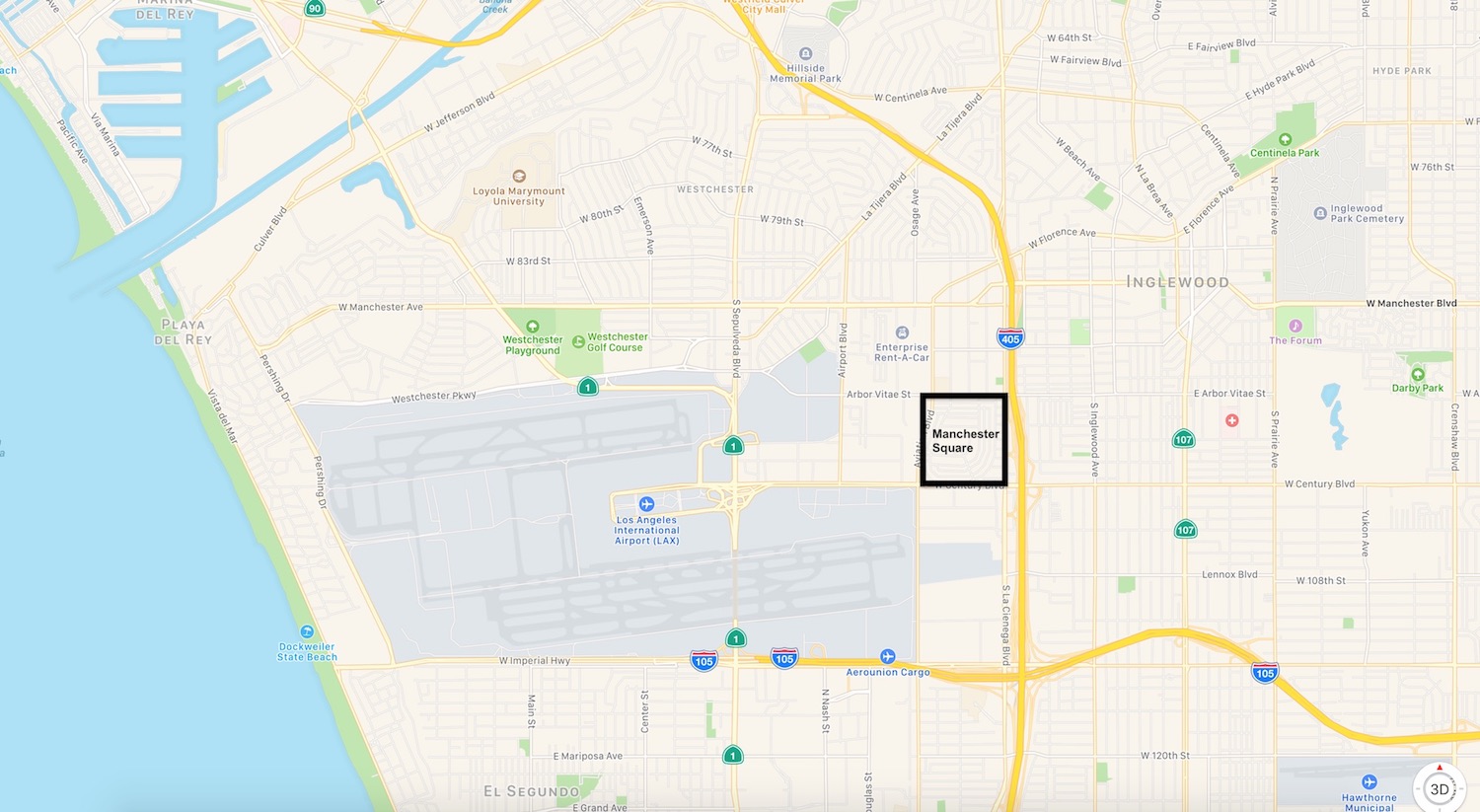For as long as Manchester Square has been a neighborhood, it's always had to contend with airplane noise. That would become be the initial reason for the neighborhoods demise.
In 1995, residents of Manchester Square were offered a grant from the Federal Aviation Administration (FAA) to help soundproof their homes from airplane noise. As LAX got busier through the years, noise from planes flying directly overhead became progressively more frequent. Rather than take the grant money, some residents just decided to sell their homes to the airport.
Because residents started moving out because of the noise, in 1998 LAWA implemented a program called the Voluntary Acquisition and Relocation Program. This program allowed LAWA to buy property from people who didn't want to soundproof their homes and the agency also offered relocation assistance.
LAWA didn't have a plan for what they wanted to do with the properties, but bought them nonetheless. The airport razed the properties they bought. People began losing neighbors. The area became less desirable. More people sold, more houses were razed and the situation snowballed into what is now a blighted neighborhood.
Manchester Square is part of a larger overall community in Los Angeles called Westchester, which includes LAX along with neighborhoods to the north and east of the airport. To LAX's south is the city of El Segundo. To the west and northwest is the Los Angeles neighborhood of Playa del Rey, including a thin strip of land separating the airport from the Pacific Ocean.
Westchester was mostly farmland 100 years ago until LAX became an airport in 1928. Loyola Marymount University moved its present campus to Westchester the following year. The area soon went through a phase of rapid development with neighborhoods popping up to support the new airport and university. But as the area around LAX grew, so too did the need for the airport to do the same.
LAX was built during the middle of a rapid population boom for the city. From 1920 to 1940, Los Angeles's population nearly tripled, going from America's 10th most populated city at 576,673, to the nations fifth at a little over 1.5 million. By the 1980s, Los Angeles's population grew past 3 million and dethroned Chicago as America's second most populated city.
This population growth meant Los Angeles needed an airport that could keep up, and LAX delivered. It's now the second busiest airport in the United States and fourth busiest in the entire world based on total passengers at around 80 million per year as of 2016 according to the Port Authority of New York, and New Jersey. LAX's annual passenger count increased by nearly 8 percent from the previous year. This is far ahead of other busy international airports in the top 10 like Heathrow in London, 0.97 percent, O'Hare in Chicago, 1.79 percent, and Charles de Gaulle in Paris, 0.25.
For a large American city with a busy international airport, Los Angeles faces a few unique challenges with LAX. For one, the airport is directly surrounded on three sides by residential areas and an ocean on the fourth. Atlanta's Hartsfield-Jackson Airport is the world's busiest airport, but it's in America's ninth largest metropolitan area. Unlike Los Angeles, Atlanta serves more as a layover hub than an actual destination. This means many people don't actually leave the airport when they arrive to Atlanta and don't add to outside traffic. Atlanta-Hartsfield also has 4,700 acres of land to work with, while LAX is at 3,500.
New York is America's largest city, but benefits from having three regional airports in the list of the U.S.'s top 20 busiest. Chicago is served by O'Hare, America's third busiest airport, but has over twice as much land area than LAX. The San Francisco Bay Area is served by four of America's top 40 busiest airports. But LAX is the singular dominant airport in the greater Los Angeles region that is America's second largest metropolitan area and has a population of over 18 million people. None of LA's other regional airport's, Bob Hope in Burbank, John Wayne in Orange County, San Bernardino, Ontario and Long Beach are among America's top 50 busiest.
LAX and the surrounding area are strained by how busy it is. Traffic into the airport is notorious with local residents. As LAX has gotten busier over the years, the imperative for airport expansion has increased. This has caused tension between the airport and surrounding neighborhoods for decades.
Denny Schneider is the president of the Alliance for a Regional Solution to Airport Congestion. His organization's mission is to work with elected officials and local leaders to promote airport regionalization in Los Angeles. Their goal is for regional airports to take on more of the Los Angeles area air traffic burden so LAX can have some of its traffic mitigated.
“LAX is not only in a congested area, but it's very small by airport standards,” Schneider said. “The measure of safety of an airport is the number of operations per acre, and the higher that number the worse it is. Well LAX is ten times worse than any other airport because it's so small and it has such a large number of operations.”


